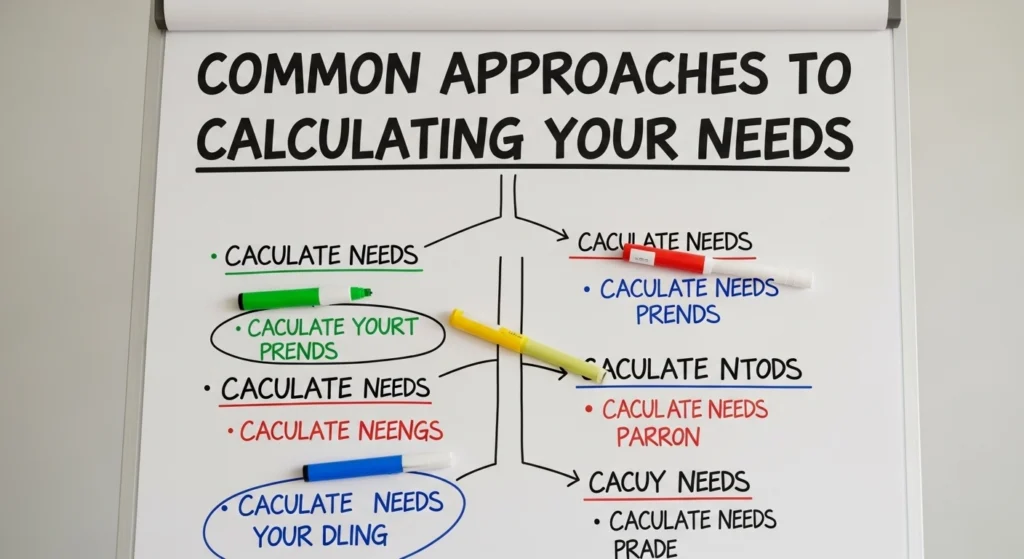Introduction
Life insurance isn’t a “one-size-fits-all” product. The “right” amount of coverage is highly personal, depending on your unique financial situation, dependents, and future goals. While it might seem like a daunting calculation, understanding the key factors can empower you to make an informed decision that truly protects your loved ones.
Why Life Insurance Matters
In its simplest form, life insurance is a financial safety net. It provides a lump sum payment (the “death benefit”) to your chosen beneficiaries if you pass away. This money can be crucial for:
- Replacing Lost Income: This is often the primary reason people buy life insurance, ensuring your family can maintain their lifestyle without your regular earnings.
- Paying Off Debts: Covering mortgages, car loans, credit card debt, and student loans prevents these burdens from falling on your loved ones.
- Funding Future Expenses: Think about college tuition for children, a spouse’s retirement, or even a down payment on a future home.
- Covering Final Expenses: Funeral costs, medical bills not covered by health insurance, and other immediate expenses can be substantial.
- Providing for Dependents with Special Needs: If you have a child or other dependent who will require lifelong care, life insurance can establish a fund for their continued support.
Common Approaches to Calculating Your Needs
While online calculators can give you a starting point, a truly personalized approach considers various methods:
1. The DIME Method (Debt, Income, Mortgage, Education)
This comprehensive method helps you account for the most significant financial obligations:
- D for Debt (Non-Mortgage): Add up all outstanding debts your family would need to pay off immediately, such as car loans, personal loans, and credit card balances.
- I for Income: Estimate how many years your family would need your income replaced. A common guideline is to multiply your annual income by 5 to 10 years, depending on the age of your dependents and how long they’ll rely on your income.
- M for Mortgage: Include the full outstanding balance of your mortgage, so your family can remain in their home without financial strain.
- E for Education: Estimate the future cost of your children’s college education or any other significant educational expenses you plan to cover.
Example: If you have $20,000 in non-mortgage debt, need 7 years of your $70,000 income replaced ($490,000), have a $250,000 mortgage, and estimate $100,000 per child for education (for two children, $200,000), your DIME calculation would suggest approximately $960,000 in coverage.
2. Income Replacement Multiplier (e.g., 10x Your Income)
A simpler rule of thumb often suggested is to multiply your annual income by 10 to 15 times. While easy to calculate, this method can overlook specific debts or future expenses, so it’s best used as a quick starting point. Some variations suggest 10x your income plus $100,000 per child for education.
3. Human Life Value (HLV) Approach
This method focuses on your potential future earnings. It calculates the present value of all your future income, minus your personal expenses. This can result in a higher coverage amount, aiming to fully replace the economic contribution you would have made over your lifetime.
Factors That Influence Your Coverage Needs (and Premiums)

Beyond the calculation methods, several personal factors will significantly impact the amount of coverage you need and the cost of your premiums:
- Age: Generally, the younger and healthier you are when you purchase a policy, the lower your premiums will be.
- Health and Medical History: Pre-existing conditions, family medical history, height, and weight all play a role. A medical exam is often required.
- Dependents: The more people who rely on your income (children, a non-working spouse, elderly parents), the more coverage you’ll likely need.
- Debt: Significant outstanding debts, especially a mortgage, increase your coverage needs.
- Financial Goals: Are you planning to fund college, leave an inheritance, or ensure a spouse’s comfortable retirement? These goals require higher coverage.
- Existing Assets: Any savings, investments, or existing life insurance policies can offset the amount of new coverage you need.
- Lifestyle & Occupation: Risky hobbies (e.g., skydiving) or dangerous professions can lead to higher premiums.
- Type of Policy: Term life insurance (coverage for a specific period) is generally less expensive than whole or universal life insurance (permanent coverage with a cash value component).
What About Stay-at-Home Parents?
It’s a common misconception that stay-at-home parents don’t need life insurance because they don’t earn an income. However, they provide invaluable services (childcare, housekeeping, cooking, transportation, etc.) that would be expensive to replace. A good rule of thumb is to calculate the cost of these services annually and multiply that by 10-12 years to determine appropriate coverage.
Re-evaluating Your Needs Over Time
Life is dynamic, and your insurance needs will change as you go through different life stages. It’s wise to reassess your policy:
- When you get married or divorced.
- When you have children.
- When you buy a home or take on significant debt.
- When your income significantly increases or decreases.
- When your children become financially independent.
- When you approach retirement.
FAQ
Q: Is life insurance an investment? A: Term life insurance is generally not considered an investment; it’s pure coverage. Permanent life insurance policies (like whole life or universal life) can have a cash value component that grows over time and can be borrowed against, making them a hybrid product. However, for most people, separate investments tend to offer better returns.
Q: What’s the difference between term life and whole life insurance? A: Term life insurance provides coverage for a specific period (e.g., 10, 20, or 30 years). It’s typically more affordable and simpler. Whole life insurance provides permanent coverage for your entire life and usually includes a cash value component that grows over time. Whole life policies are generally more expensive than term policies for the same death benefit.
Q: How often should I review my life insurance policy? A: It’s recommended to review your life insurance needs every 3-5 years, or whenever a major life event occurs (marriage, birth of a child, new home, significant debt, change in income, etc.).
Q: Can I have multiple life insurance policies? A: Yes, it’s possible to have multiple life insurance policies from different providers or different types of policies (e.g., a term policy for a specific debt and a whole life policy for lifelong coverage).
Q: What happens if I outlive my term life insurance policy? A: If you outlive a term life insurance policy, the coverage simply ends. There is no cash value payout. You may have the option to renew the policy (often at a much higher premium) or convert it to a permanent policy, depending on the terms.
Q: Are life insurance payouts taxable? A: Generally, death benefits paid to beneficiaries from a life insurance policy are not subject to federal income tax. However, there can be exceptions for certain situations, such as if the policy is part of an estate that exceeds the federal estate tax exemption. It’s always best to consult with a tax professional regarding your specific situation.
Q: Can a single person without dependents need life insurance? A: Yes. Even without traditional dependents, a single person might need life insurance to cover outstanding debts (student loans, personal loans) that would fall to co-signers or their estate, or to cover final expenses like funeral costs. Leaving these burdens to family members can be a significant financial strain.
Conclusion: Your Financial Peace of Mind
Determining “How Much Life Insurance Do You Really Need?” is a critical step in your financial planning. It’s not just about a number; it’s about safeguarding your family’s future and ensuring their financial stability in your absence. Take the time to honestly assess your current situation, consider your future goals, and use the methods and factors discussed to arrive at a coverage amount that provides genuine peace of mind. While online calculators are helpful, consulting with a qualified financial advisor can provide tailored insights and ensure you have the precise coverage to meet your unique needs. Don’t leave your family’s future to chance – make an informed decision today. Sources

